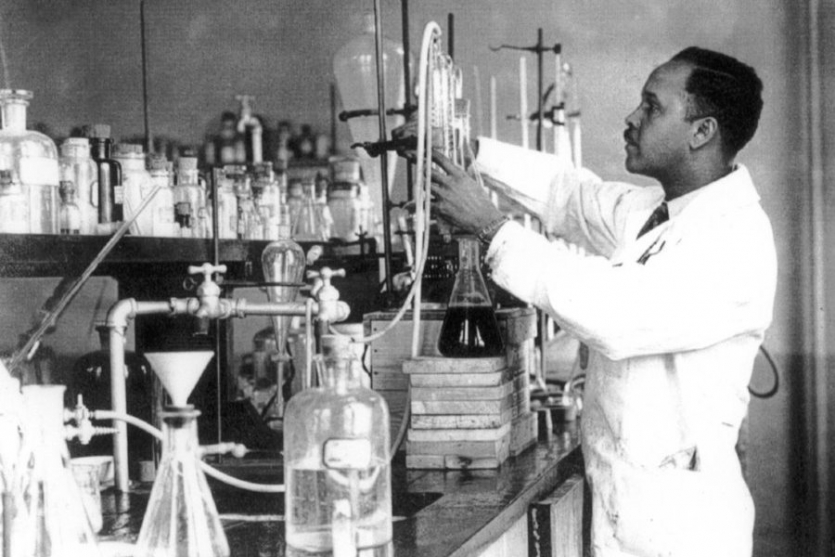
An article by Prof A C Benniston Deputy Head of School
As part of black history month it is worth looking back and recognising the pioneering work of black scientists that tend to go unnoticed. As a chemist myself the career of Percy Lavon Julian is highlighted, and I encourage everyone to read the full article on his life.
Percy Lavon Julian (1899-1975)
Percy Julian studied chemistry at DePauw University in Indiana and graduated top of his class in 1920. After completing a Master’s degree from Harvard he wanted to continue for a PhD but was rejected because of his colour. Despite this, he eventually got a place of study at the University of Vienna, Austria, to work on natural products with Ernst Späth. He obtained his PhD in 1931 and returned to America to work on steroids at DePauw University. With his collaborator Joseph Pikl they studied the natural product physostigmine, which was at the time an effective treatment for glaucoma but difficult to source. Julian as a chemist spotted that it could be synthesised but he was not the only person to recognise the possibility. The famous chemist Robert Robinson was working on the problem and seemed to have beaten Julian by publishing its synthesis. It turned out that Robinson had actually made the wrong compound and in 1935 Julian published the correct synthetic method. His achievement would only be recognised much later by the American Chemical Society, but at the time it was not good enough for him to get promotion at DePauw.
Julian’s move to industry and a job at Glidden was very productive, where his work on soybeans led to the discovery of lecithin, fire retardant chemicals, oils for paints, plant sterols and their use in the production of sex hormones at a low cost. After leaving Glidden Julian set up his own chemical company (Julian Laboratories) again focussing on natural products but this time from the Mexican yam plant. He was successful in producing medicines from cheap starting materials, eventually selling the company and setting up the Julian Research Institute
